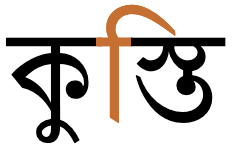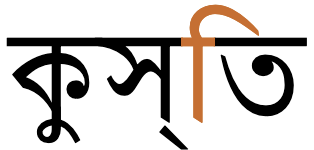Phonology
Click on the sound groups to see where else in the document each of the sounds are referred to.
Phones in a lighter colour are non-native or allophones. Source Wikipedia.
Vowel sounds
Plain vowels
Complex vowels
There are a large number of diphthongs in Bangla, and the chart below shows an incomplete set.wp
Vowel harmony
The pronunciation of a vowel can be affected by the vowel in the following syllable. Radice provides the following table, though this is a simplification and there are many exceptions.
| Followed by i or u | Followed by ɔ, o, e or a |
|---|---|
| o → u | o → ɔ |
| ɔ → o | u → o |
| e → i | e → æ |
| æ → e | i → e |
For example, the verb শোনা ʃonɑ to hear with an i ending becomes ʃuni, দেখা dækʰa to see becomes dekʰi, etc. This sometimes accounts for the pronunciation of the inherent vowel, eg. অতিথি otitʰi guest and অনুবাদ onubad translation start with o rather than ɔ.
Consonant sounds
pf, pʰ and f are alternative pronunciations for the same phoneme, depending on where the speaker is from, and all are written using 09AB
True retroflex (murdhonno) consonants are not found in Bengali. They are apical postalveolar in Western Dialects. In other dialects, they are fronted to apical alveolar.wp
r occurs word-initially, whereas ɾ occurs medially and finally. Both sounds are written using 09B0.wp
s and ʃ are often merged. z is found mainly in foreign words.wp
In the Bangla spoken in Dhaka, ɾ and ɽ are often indistinct phonemically,wp eg. the following two words can be homophonous: করা কড়া
j and w are pronunciations of 09AF 09BC when it appears between certain vowels.
Structure
The effective unit of the Bengali writing systems is the orthographic syllable.
An orthographic syllable can be defined in one of the code point sequences described below. Lowercase letters represent combining characters. Some vowel signs may be displayed at the start of the sequence, although the code points representing them always appear after the base consonant
Consonant-based orthographic syllables
[C[n]h] [C[n]h] C[n] [h | v (n)] [f]
Legend
C- Consonant.
Cn- Consonant followed by nukta.
h- Hasant.
v- Vowel sign.
n- Nasalisation diacritic (candrabindu).
f- Final consonant (one of khanda ta, anusvara, or visarga).
The core of a consonant-based syllable is a base consonant character, which may or may not additionally represent an inherent vowel if it stands alone.
There is no inherent vowel if it is followed by a vowel sign, eg. কী kī কি ki কো ko or hasant, eg. ক্ k͓.
At the end of a word, there may or may not be an inherent vowel, even if there is no hasant.
Any base consonant may be a combination of consonant code point plus nukta.
The base consonant can be preceded by up to two consonant+hasant pairs (where the consonant may also be a combination of consonant+nukta), but only if those consonants form conjuncts (ie. the hasant is invisible), eg. ক্ক k͓k ম্প m͓p ক্ষ k͓ʃ̇ ন্ত্র n͓t͓r. If the preceding consonants carry visible hasant symbols, those are treated as separate orthographic syllables.
Likewise, the variable use of the hasant in Bengali means that a phonetic cluster of consonants can constitute a larger series of orthographic syllables. For example, this word for cymbal has two phonetic syllables, but 3 orthographic since the rt combination is not combined: করতাল
A vowel sign may optionally be followed by a nasalisation diacritic.
Unless the base consonant is followed by a hasant, the syllable may be terminated by a final consonant repesented by khanda ta, anusvara, or visarga.
Consonant clusters
Native Bengali words do not allow initial consonant clusters, and word-final clusters are rare. However, words borrowed from Sanskrit, English, etc. have introduced many such features.
Many Bengali speakers, however, retain the native phonology, even when using Sanskrit or English borrowings, such as গেরাম gerɑm (CV.CVC) for গ্রাম g͓rɑm village (CCVC), or ইস্কুল ịʃ͓̈kul (VC.CVC) forস্কুল ʃ͓̈kul school.wp,#Consonant_clusters
Most word-final clusters were introduced from English, eg. লিফ্ট lipʰ͓ʈ lift, elevator or ব্যাংক b͓ʲɑŋ̽k bank. In some dialects, a final nasal+stop is written as a cluster, whereas in standard Bengali it would use nasalisation, eg. চান্দ cɑn͓d vs. চাঁদ cɑm̽d moon.wp,#Consonant_clusters
For more information, see Wikipediawp,#Consonant_clusters.
Vowel-based orthographic syllables
Vowel-based syllables begin with a standalone vowel, which is represented by a single independent vowel or vocalic.
An independent vowel may be followed by an anusvara, visarga or candrabindu (nasalisation), eg. উঃ, আঁ ụh̽, ɑm̽



















 indicates Ligated,
indicates Ligated,  means Non-Ligated.
means Non-Ligated.  indicates that the sequence breaks, with a dotted circle between consonant and vowel.
indicates that the sequence breaks, with a dotted circle between consonant and vowel.















